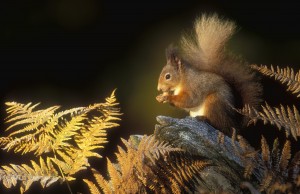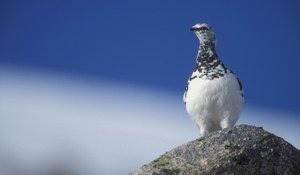My Scottish Obsession
Scottish Animals
One of the best parts about traveling to a new place is getting to scout out the local wildlife. Scotland is such a great place to view all of the wild life because of its extensive coastline, woods, and mountainous regions.
The Sea


The Basking Shark
The dorsal fin may be visible as this plankton-eating shark is seen filter feeding near the surface. Its open mouth is about 2 metres wide. In calm conditions it may be seen close to the shore although is generally in deeper waters. The second largest fish in the world, it reaches up to 12 metres in length and weighs up to 7 tonnes. They are slow moving sharks, which may approach boats but are harmless.
The Otter
Otters are highly adapted aquatic hunters, who are related to badger and pine marten, and are one of the most eagerly sought, yet elusive mammals in Scotland. They are usually a shade of light brown, which can look darker when wet. They have a streamlined and cylindrical muscular tail and webbed feet. When they swim on the surface of the water, their square muzzle makes a distinctive vee-shaped wake. The ears appear very small and they have large visible whiskers. When diving and swimming underwater they gradually let their breath out, leaving a distinctive chain of bubbles.
style="font-size: 14pt; font-family: 'Montserrat', sans-serif; "> The Bottlenose Dolphin
The Scottish bottlenose dolphins are considerably larger than their cousins living in the warmer waters off Florida, USA. These dolphins can be between 3 and 4 metres in length and are normally to be seen in pods (groups) of up to ten animals. Pods can form to make much larger groups at times. Bottlenose dolphins are grey in colouring, with a pale, almost white underside, however the colours of individuals vary. The upper body from dark grey to grey brown and the underside from light grey to white. The lower jaw is distinctive as it extends out further than the upper jaw. This active and playful cetacean can be seen jumping up out of the water (breaching) and swimming at up to 20mph when hunting. They eat fish, such as atlantic salmon and have been known to kill harbour porpoise, but not for food.
The Land



The Pine Marten
This agile tree dwelling mammal is part of the badger and otter family. It has a dark brown coat and a bushy tail. Each pine marten has a unique bib pattern under its chin and down its chest, which can be coloured from an orange-yellow to almost white. They have large rounded ears that stick up from the sides of their heads. A male can be almost twice the size and weight of a female.Pine martens have a distinctive bouncing run when on the ground moving front feet and rear feet together. They may stop and stand upright on their haunches to get a better view. They are athletic climbers and can hunt and catch red squirrels in trees.
The Wildcat
Wildcats are truly wild cats and are perhaps the most difficult animals to see in the wild in Scotland. They are experts at keeping out of the way of humans. This predominantly grey coloured cat has a distinctive bushy tail with seven black bands around it. On average, the wildcat is bigger than a domestic cat, and despite many photographs suggesting otherwise, their ears are similar in both size and structure to a domestic cat’s.
The Red Squirrel
Wildcats are truly wild cats and are perhaps the most difficult animals to see in the wild in Scotland. They are experts at keeping out of the way of humans. This predominantly grey coloured cat has a distinctive bushy tail with seven black bands around it. On average, the wildcat is bigger than a domestic cat, and despite many photographs suggesting otherwise, their ears are similar in both size and structure to a domestic cat’s.
The Sky



The Red Kite
Red kites are easily identified by their large size (wingspan of almost 2m), reddish-brown colourings and deeply forked tail. A successful re-introduction programme has resulted in the birds becoming increasingly common in the Black Isle (near Inverness) and the Trossachs. Kites feed on predominantly on carrion, although will also take small mammals and worms. They are often seen hovering near roadsides looking for road kill.
The Gannet
These are large to very large seabirds, with long, tapered bodies, long, angular, pointed wings, pointed tails and dagger-like, pointed bills. They feed by diving into the sea for fish. Only one species is regularly seen in the UK but a few other kinds are found, mostly in tropical seas, around the world. Most are largely white, with black on the wings, but one species is mostly dark brown. They breed in colonies on cliffs and islands, some tropical species nesting in trees.
The Ptarmigan
The ptarmigan is a plump gamebird, slightly larger than a grey partridge. In summer, is a mixture of grey, brown and black above with white bellies and wings. In winter, it becomes totally white except for its tail and eye-patch, which remain black. It breeds in the highest mountains of the Highlands of Scotland on the Arctic like landscape there. Birds are residents, seldom moving far from breeding sites. In severe cold weather, birds may move from the highest ground to the edge of forests.
